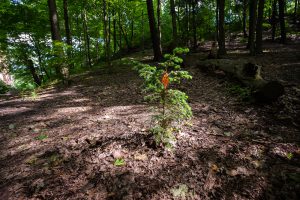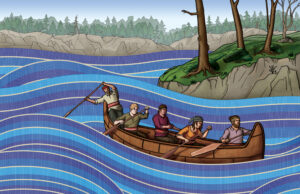In the canyons of Toronto’s South Core, the oddly shaped forest of high-rises and entertainment venues shoe-horned between the rail corridor and the Gardiner Expressway, it is almost impossible to imagine that this lively city space was, until the 1970s, a wasteland of railway tracks and grimy factories.
The ground began to shift shortly after the 1967 centennial, when municipal officials and their counterparts at both CN and CP unveiled an expansive vision, dubbed Metro Centre, for redeveloping the railway lands. The plan included apartments, offices, a hotel-convention centre and even a new concert hall. The linchpin, so to speak, would be a soaring radio-telecommunications tower, plunked down right in the middle of the rail lines. In early renderings and models, the tower consisted of a pair of connected columns, but the design evolved into a tapered, three-legged affair collared by a giant pod. Construction began on Feb. 6, 1973, and lasted for more than three years. Torontonians watched transfixed as this slender, unadorned object shot up out of the sidings like some kind of giant concrete amaryllis.
The newspapers ran vertigo-inducing photos of workers perched on exposed beams high above the city, then covered the flights of the Sikorsky “skycrane” helicopter that had been pressed into service to hoist the highest segments into place. One component, a long iron cylinder, was displayed near the base of the tower, and anyone who wanted to sign it could do so. My signature is on there somewhere.
When the CN Tower formally opened in June 1976, it had a transformative impact on Toronto. Ostensibly designed to provide clearer broadcast signals in an increasingly vertical city, the tower became an instant icon, indelibly associated with Toronto’s optimistic upward growth and its skyline. The Guinness Book of World Records confirmed the CN Tower as the world’s highest free-standing structure, at 1,815 feet (553 metres), a title it held until 2007.
It attracts some two million tourists a year and has played host to seemingly countless fundraisers that involve volunteers climbing the stairs up to the pod. In the past decade, fearless visitors have been able to do the EdgeWalk, venturing out on to the pod’s roof decked out in orange jumpsuits and safety harnesses. Occasionally, someone rappels down the side. Meteorologists, meanwhile, monitor lightning strikes from the tower, which are both plentiful and spectacular.
For all its records and postcard views, the CN Tower has served another critical function in the life of the city. As the first building to break ground in the railway lands, it drew attention to a neglected and forlorn part of Toronto. In the decade after it opened, several more elements of the original Metro Centre plan fell into place: a convention centre, a new headquarters for the CBC, Roy Thomson Hall. SkyDome, now the Rogers Centre, opened next to the tower in 1989. Indeed, in the half century since construction began, the precinct at the foot of the CN Tower has become thoroughly urbanized. The once broad steppe of railway tracks, in turn, has been reduced to a narrow corridor for commuter and VIA Rail trains, and this segment will almost certainly be covered over in the next few decades.
While other towers have since surpassed it in height, the CN Tower still dominates Toronto’s skyline, an undiminished exclamation point from an optimistic era.





